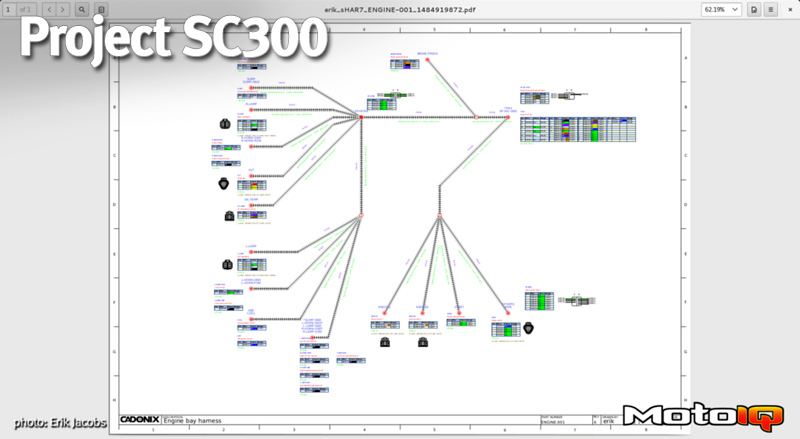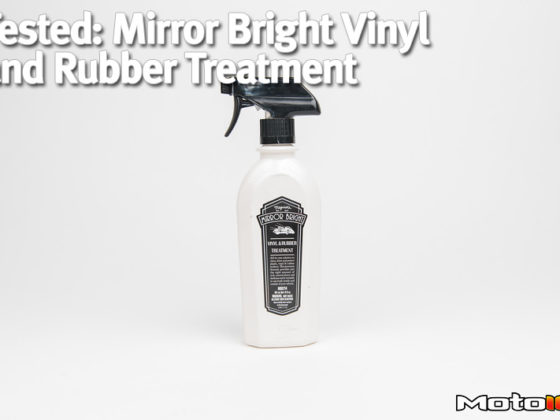,
 The two main legs of the engine bay harness.
The two main legs of the engine bay harness.One of the things that was not discussed was the knock sensor wiring. Because the knock sensor is both a very sensitive device as well as carrying a relatively high frequency signal, it’s very important to isolate it from noise. In our case we used shielded, twisted Spec55 wire. We use this same shielded wire for the wheel speed sensor circuits, that you might have seen in previous segments.
While this shielded bundle comes with three wires inside, our flat response Bosch knock sensor only requires two wires. Instead of doing something strange with one 3-wire cable and splices and other things to reach the two knock sensors, each of them gets their own 3-wire cable going to it, with one of the wires unused. This has the added benefit of giving us an extra twisted, shielded wire in each cable should there be some problem or malfunction in the future.
You can also see the brake pressure sensor leg hanging out waiting for shrink wrap. When it’s quittin’ time, it’s quittin’ time.
 Another day, another crimp… Or twenty.
Another day, another crimp… Or twenty.The circular milspec connector for the power and signal distribution harness is pretty beefy. It is a MS 3476 18-32S with 32 #20 sockets. In hindsight this should have been pins and the mating connector on the firewall should have been sockets. Oops.
These bigger circular milspec connectors can be tricky. They use letters (instead of numbers) for their cavities, and they are a little hard to figure out. Finding the “top” (A) can be an exercise in frustration. Consistency and patience are important.
You can also see that Tom has inserted service loops. Service loops have a couple of purposes. One obvious one that you can glean just from the name — service and repair. If a crimp connector (socket or pin) gets damaged somehow, it needs to be cut off and replaced. There would still be a little length of wire in the harness to accomplish that.
Also, as this is on the “wet” side, being in the engine bay, the connector will have a glueline boot shrank over it to create an environmental seal between the connector body and the heat shrink on the bundle. This glueline can actually grab the wires so hard that it can pull them out of the connector cavities. These service loops help with strain relief in this case. Putting some kind of tape over the wires also prevents the glue from getting all over them and making them impossible to service at a later date.
 The knee bone’s connected to the… thigh bone. Wait, wires?
The knee bone’s connected to the… thigh bone. Wait, wires?You can start to go loopy trying to pin out these bigger circular connectors (see what I did there?). Be patient, and check your multimeter, several times. Pick one end to work with, and look for connectivity at the other end, and let that be your guide to which wire goes in which cavity.
Oh, and try not to put pins or sockets on filler wires. It’s kind of expensive to waste those bad boys!
 Just tap it in…
Just tap it in…Carefully insert the pins into the cavities until they click and are properly retained. A gentle tug on the wire ensures they are properly seated. You do know what gentle means, right?



